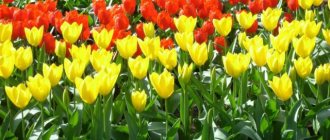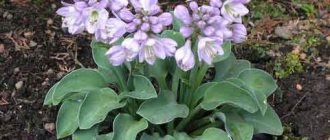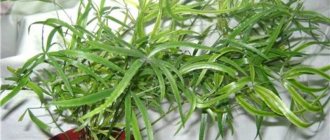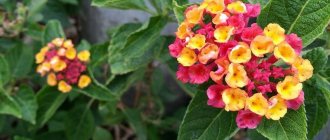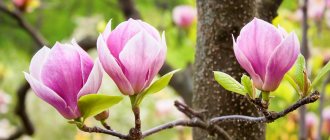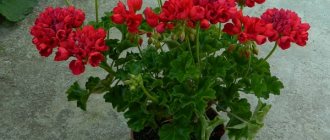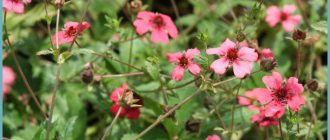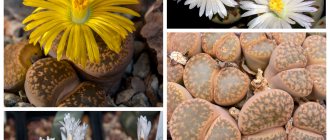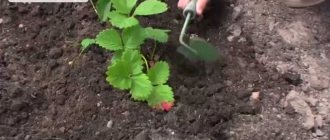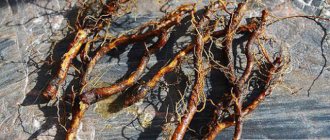Growing from seeds
How to grow Venus flytrap from seeds? Flytrap seeds can be obtained from an adult plant or purchased in retail chains. At home, seeds can only be obtained by artificial insemination.
To do this in the spring, when flowers appear, pollen is transferred from one flower to another with a brush. The procedure is carried out a couple of days after the bud has fully opened.
After a month, ovaries appear on the flowers.
The flower forms a capsule in which 20-30 seeds .
They should be shiny, smooth, black. The collected seeds are stored in the refrigerator in a paper bag. Sowing of seeds is carried out four to five months after they are collected. Seeds, whether grown independently or purchased, must be stratified before planting. The process lasts 6-8 months .
The seeds are placed in a cloth, moistened with a fungicide, placed in a plastic container and placed in the refrigerator. During this time, the container is opened and the seeds are moistened.
At the end of the stratification process, sowing is done in a mixture of peat and sand or sphagnum moss. The soil is slightly compacted and seed material is distributed over the surface. Everything is sprinkled with a small amount of peat on top and moistened with a spray bottle.
about a month, the first cotyledon leaves will appear. After the true leaves appear, the sprouts are planted in separate small pots. A full-fledged plant from such sprouts develops in 4-5 years.
In the photo you can see how to grow a Venus flytrap from seeds:
The video shows an experiment: planting, first shoots, what can grow. Choose your seeds carefully.
How to plant seeds
How they sprouted
What grew in the end
Reproduction methods
Here are four methods for propagating Dionaea:
- cuttings;
- bulb division;
- seminal;
- use of peduncle.
Cuttings
Dionaea cuttings must be taken without a trap. Sections need to be treated with Kornevin. The cutting should be planted with the lower white part at an angle. The container must contain wet peat or, alternatively, a mixture of sand and peat. Next, the lid must be tightly closed and then placed in light and heat. At the same time, until the plant takes root, it is necessary to maintain warmth, bright lighting and high humidity.
Dionaea can be propagated by cuttings without traps
Baby bulbs
An adult Dionaea becomes “equipped” with many daughter bulbs throughout its life. This plant feels great around children, and their separation is very stressful for it. And therefore, at least three years must pass between two neat branches of the bulbs. When separating the bulbs, you need to be careful and separate them along with the roots. Then the bulbs need to be planted in separate pots.
Important! The cut areas must be sprinkled with crushed coal.
Next, these seedlings must first be kept under a film to create a greenhouse effect, and before they take root, kept in partial shade.
Dionea produces many bulbs, but their separation is stressful for the plant
Growing from seeds
Dionaea is the most difficult to propagate by seed. What’s worse is that it’s still unknown what will happen. Genetically, the daughter plants are not complete “clones” of the mother plants, and the characteristic features inherent in the mother Dionaea disappear. Only an adult plant produces seeds, and Dionaea becomes like this after reaching a couple of years. The gardener will have to pollinate Dionaea with his own hands. You need to use a cotton swab or a small brush to take pollen from each flower, which you want to transfer to another flower. And do this for several days and several times. If pollination is successful, a capsule fruit is formed on the plant. By autumn it will already contain seeds suitable for sowing. They need to be planted immediately, since germination is then lost.
Important! Purchased dionaea seeds must be planted in the same way as those obtained independently.
You will have to pollinate Dionaea to obtain seeds yourself.
First of all, you need to prepare a container and soil for planting, and also a greenhouse for further maintenance of the plants. It is recommended to plant seeds in a container with a lid. Line the bottom with a mixture of one part sand and two parts sphagnum moss. Before planting, you must also treat the seed with Topaz solution, strictly following the attached instructions. Next, the seeds must be spread over the soil mixture. Now cover the container with a lid and place it in the sun. If it is not available, you can use it under a fluorescent lamp or a phytolamp. The light should shine on the container for about 13 hours a day, give or take one hour. In this case, it is necessary to maintain maximum air humidity.
Important! Keep the temperature at 25-30 degrees.
It will take about a month for the seeds to sprout the first shoots. When the soil begins to dry out, it needs to be moistened with a spray bottle of warm distilled water. With the appearance of the first foliage, it is time to start ventilating the greenhouse. At first, you need to open it for a short time, allowing the seedlings to harden and get used to the fresh air. After a month, it is allowed to leave the greenhouse open. After some more time, the sprouts need to be planted into pots having a diameter of nine centimeters, plus or minus one centimeter. It will take five years for the seeds from the sprouts to mature.
It takes a long time for a Venus flytrap to grow from seeds, but it requires careful care: you need to organize a “greenhouse” for plant germination, control lighting and watering
Reproduction using a peduncle
In spring, a long peduncle grows on Dionea. Its length reaches 50 centimeters, while the plant itself can be 10-15 centimeters tall. If Dionaea is still young, it may not have enough strength for such flowering, which will lead to illness. So a gardener who is not confident in the strength of the plant should immediately cut off the peduncle. However, it is better to preserve this part of the dionaea in order to propagate the plant. To do this, the peduncle needs to be cut until it reaches only five centimeters. It needs to be stuck into moistened peat to a depth of five centimeters. Next, cover with film or a light-transmitting cap, thereby creating greenhouse conditions.
The peduncle takes root in one and a half to two months. Throughout this period, it is necessary to ventilate the greenhouse and carefully ensure that the peat maintains proper moisture. Even if the peduncle dries out, this is normal; it will not affect the timing of the appearance of shoots, so there is no need to despair.
Important! A month after the growth appears, it is time to transplant it into a pot.
You can propagate the plant using a growing peduncle, which is cut and rooted in peat
From the shoot
Dividing an adult plant is the most acceptable way to grow a flytrap. The shoots are separated from the bush and planted in separate pots of small diameter, but at the same time of sufficient height for the development of long roots.
This plant needs soil
that is as light as possible and quite poor.
Mix crushed sphagnum moss, peat and sand. There is no need for drainage at the bottom of the pot for a flytrap. In addition to division, a young plant can be obtained from cuttings . The workpiece is taken without a top trap and planted at an angle with the white part in the peat.
Before placing it in the soil, the workpiece is treated with a root formation stimulator. From above you need to cover the planting with a glass cap to maintain one hundred percent humidity.
From an onion
The flycatcher bulb, separated from the bush during transplantation, is placed in a mixture of peat and sand. The onion chosen for planting must have at least two roots , otherwise there will be no growth.
When placing in a pot, it is important not to cover the growing point of the flower. Germination is carried out in greenhouse conditions in a sunny place.
No matter how you grow the flycatcher, when the first traps appear, you need to start feeding . To do this, once every 10-15 days, catch a fly, prick it with a needle and place it inside the leaf.
The growth of the flytrap with this feeding will accelerate, and you will get a full-fledged plant faster. Find out more about the best and safest way to feed your plant here.
By following all the rules of propagation, you can get new specimens of this exotic plant for your home flower collection.
If you find an error, please select a piece of text and press Ctrl+Enter.
Description of the flycatcher
The Venus flytrap is a flower that represents fertility and prosperity. Symbolizes love and sympathy, and can also symbolize the feminine principle.
On the short underground stem of the plant there are no more than 7 leaves, collected in a rosette, 3-7 cm in size. It prefers to grow in swamps with a low nitrogen content in the soil. This deficiency is compensated by eating nitrogen-containing insects - trap leaves are designed for this.
They appear after flowering, on short stems not exceeding 15 cm in length. The traps are green, with a reddish tint. A kind of trap is formed from two sheets, with hairs placed on the edges for better adhesion to each other when triggered.
The glands of the trap produce a special juice that attracts insects. To feast on it, the victim sits on the inner petals and collects nectar. At the same time, special hairs on the trap are irritated, and it instantly slams shut. After the blades are completely closed, a kind of stomach is formed in which the extracted food is digested. After a week of baiting, the trap opens and the cycle is repeated several more times until it dies.
Botanical description
The predator Venus flytrap is a perennial herbaceous insectivorous plant of the Sundew family, the only species of the genus. The height of adult specimens does not exceed 15 cm. The stem of the plant is bulbous, the flowers are white, collected on a long peduncle in corymbose inflorescences. Since in nature the Venus flytrap grows on soils with insufficient nitrogen content, insects and mollusks, in particular slugs, serve as the source of this element for the plant.
The leaves of the Venus flytrap, in numbers from 4 to 7 pieces, grow from a short underground stem and form a rosette. Traps grow back after flowering. They are from 8 to 15 cm long, green in color, but in good light their internal cavities have a red tint. Traps are formed at the end of short petioles collected in rosettes. The closer to summer, the longer the petioles become, gradually taking on a vertical position. The traps consist of two slamming flaps with sparse bristles along the edges. Inside the trap there are glands that produce nectar, which attracts prey. In addition to the bristles, there are three triggers along the edges of the trap; when irritated by insects, the trap closes and the plant begins to secrete digestive secretions.
Digestion of food lasts from 5 to 10 days, after which the predatory Venus flytrap opens the trap leaf. The trap dies after digesting two or three victims, although there have been cases where one leaf served as a grave for 7 insects in turn.
- Ficus: care at home
How to grow a Venus flytrap from seeds
In spring or early summer, the Venus flytrap begins to bloom. Small graceful white flowers appear on long peduncles. This process takes a lot of the flycatcher's strength. Therefore, you should leave the buds only if you need seeds.
The Venus flytrap is not capable of pollinating on its own at home; this will need to be done manually:
- after opening the buds, you need to take a thin brush;
- with its help, collect pollen from one flower;
- With gentle movements, transfer it to the other pestle, trying not to damage it;
- continue to cross-pollinate with each flower.
After the ovary appears, the seeds will ripen in about a month. They need to be planted no later than 3-4 months after pollination. Growing from seeds is a rather labor-intensive process.
Stratification process and soil preparation
This method is carried out before sowing to increase the chances of seeds germinating. The seeds, wrapped in a cloth moistened with fungicide or potassium permanganate, are placed in the refrigerator. You need to regularly ensure that the seeds do not dry out by moisturizing them. The whole process lasts no more than 8 weeks.
How to Plant Venus Flytrap Seeds
Once the soil is prepared, you need to do the following:
- Sow the seeds in small pots or seedling boxes, lightly sprinkle with moss, without burying them.
- Cover the containers with glass or plastic wrap.
- Maintain a constant temperature around 24-28 °C.
- Make sure you have good bright lighting, at least 15 hours a day.
- Regularly monitor the soil moisture and do not allow it to dry out.
Care during flowering
The Venus flytrap blooms in May or June: corymbose inflorescences of small white flowers up to 1 cm in diameter with a sweetish aroma appear on tall peduncles. Flowering lasts several weeks. If you do not plan to receive Venus flytrap seeds by autumn, then it is better to cut off the flowers while they are still in buds, since flowering greatly depletes the Dionaea and does not allow its traps to fully develop.
- Hoya (Hoya) – care, photos, types
Venus flytrap in winter
In autumn, the growth of new leaves stops and the plant begins to prepare for hibernation. To help the Venus flytrap enter the dormant period, you need to reduce watering and no longer leave water in the pan. Overwintering of the Venus flytrap should take place in cool partial shade, where the temperature will remain between 7-10 ºC. You can display the flower on a glassed-in loggia or even put it in the bottom drawer of the refrigerator.
Until spring, Dionaea will not need either lighting or nutrition. She will only need to moisten the soil, but moderation should be observed in this matter to avoid rotting in the roots. A resting Venus flytrap does not look attractive at all - the leaves turn brown and die.
In early or mid-March, you can return the Venus flytrap to its original place, trim off all its traps from last year and resume caring for it. However, active growth of Dionaea will begin only at the end of May.
Flycatcher cuttings
Growing flycatchers by cuttings is best done in the spring. To do this you need:
- Cut a few leaves from the rosette. To improve the rooting of cuttings, you can use a biogrowth stimulator.
- Before planting, you need to prepare a substrate consisting of quartz sand and peat.
- Pour a small layer of prepared soil into containers and plant the cuttings.
- Cover the plants with a jar or plastic bottle and place them in a lighted place.
- The disadvantage of this method is the high possibility of rotting and fungal infection. To prevent this from happening, it is necessary to ventilate the pots by removing the covers.
- After three months, the sprouts will take root and the root system will become stronger. Then they can be transplanted into separate containers using soil for adult individuals.
Dividing a bush for planting
A very simple way to breed a flycatcher. When replanting, it is removed from the pot and removed from the soil. Using a knife, carefully separate the fused rosettes. Then, the resulting flowers are planted in separate containers and taken care of as usual at home.
How to care for a Venus flytrap at home
Despite the great difficulty of growing dionaea, it is much easier to care for than other exotic plants:
- indoor flower dionaea, can be planted in the garden or placed on a windowsill, preferably on east or west windows;
- every day you need at least 6 hours of sunlight in the morning or evening;
- When growing a flycatcher in a florarium, an artificial light source is needed. It is located at a height of 25 cm from the flower with daily lighting for 15 hours;
- it is necessary to monitor air humidity, its lack has a bad effect on the plant;
- Dionaea needs fresh air without drafts. In the summer, the flytrap can be taken out onto the balcony or street, hidden from direct sunlight on hot days;
- for the flower to feel normal, the temperature in summer should not go beyond 18-28 °C. In winter, this figure decreases significantly and can reach 8 °C.
Features of watering flycatchers
It is necessary to ensure that the soil always remains moist; drying out the soil is detrimental to your plant. Also, water should not flow through the top, which will impede the flow of oxygen to the roots. Enough water is poured into the trays so that the drainage holes are immersed in it. If necessary, the plant itself will replenish the lack of moisture.
Distilled or rain water is most suitable. Small plants in the growing stage need to be moistened 3 times a week.
Fertilizing and feeding Dionaea
The use of any fertilizers is prohibited. Dionaea is a predator, so it receives all the necessary fertilizers through food - insects. You also need to know a few simple rules:
- You only need to feed the flycatcher once a month. Over the entire growing season, 2-3 insects (flies, mosquitoes, spiders) will be enough for her;
- the insect should not be larger than the trap;
- Do not feed the flycatcher with worms and insects that have a hard shell, as well as leaf beetles that can damage Dionaea;
- It is prohibited to feed meat and general consumption products to the Venus flytrap as fertilizers;
In autumn and winter, feeding stops.
Caring for a Venus Flytrap in Winter
Like other plants, the Venus flytrap needs rest during cold periods of the year. To do this, when cold weather sets in, it is necessary to stop watering. Gradually reduce lighting and reduce temperature to 5 °C. During the entire rest period (3 months), the flytrap can be stored in the refrigerator. You need to monitor the condition of the soil all the time, not allowing it to dry out and not moisturizing it too much, otherwise the flower may wither. In the spring, by removing Dionaea from the refrigerator and gradually increasing the temperature, you can continue caring for it.
Transplanting a Venus flytrap
Spring is the best time to transplant dionaea. You can repeat it after 1-2 years. When transplanting, you need to follow some rules:
- due to the long roots, the container for the flower must be deep, but not too wide;
- when replanting the flytrap, be extremely careful not to damage the fragile roots;
- after removing the dionaea from the pot, remove the adhering soil by watering the roots with water;
- as previously written, the soil for planting a flower is prepared by mixing two parts perlite, two parts peat, and one part quartz sand.
Once Dionaea is transplanted, it will take a month for it to take root. During this period, watering must be increased, and the flytrap should not be exposed to bright sun.
Pests
Dionaea - the Venus flytrap, although very rare, is still susceptible to attacks by harmful insects. Most often, these are aphids that settle on the plant, especially traps. As a result, they become deformed and die. To combat aphids, special aerosols are used.
Also, in addition to aphids, the flycatcher can suffer from spider mites. This can happen if the air humidity is low. An acaricide solution can get rid of these uninvited guests.
Venus flytrap diseases
All flytrap diseases appear due to improper maintenance conditions:
- If the air is constantly over-humidified, black spots may appear on the flower. This could indicate a mold infection. Fungicides effectively cope with this problem.
- after the appearance of gray fluff, you urgently need to get rid of the infected parts and treat the flytrap with a fungicide;
- It happens that the insect cannot digest the flytrap, and the trap begins to rot - the most dangerous disease. If the affected area is not removed, the disease will spread to the entire Dionaea.
This is interesting - Rosyanka
The Venus flytrap grows naturally only in North America. But in temperate latitudes another insectivorous representative of this family grows. Sundew is a predator, the most common carnivorous plant. Like Dionaea, it feeds on small insects. It grows on all continents except Antarctica: in the mountains, on sandstones, peat bogs of Europe, North and South America, Asia. Most of all it grows in Australia.
Care
The plant requires special care, which differs from the usual care for simple indoor plants.
Watering and humidity
Traditional overhead watering is not suitable for the Venus flytrap because it compacts the soil, resulting in less oxygen reaching the roots. Moisten the soil by pouring water into a tray up to the level of the bottom of the pot with drainage holes. Dionaea is demanding on water quality. You can use distilled, boiled or filtered water. Regular tap water is not suitable. The water in the pan should not stagnate, so you need to monitor its level.
The Venus flytrap needs high air humidity, which must be created by all means. The easiest way is to provide it with high humidity by growing it in an aquarium or terrarium.
If your Dionaea grows in a regular pot, place moistened sphagnum moss on the soil and in the tray. It will retain moisture and increase air humidity levels. In hot weather, Dionaea is sprayed daily with a spray bottle. To increase air humidity, you can place several containers of water next to the plant, which, as it evaporates, will saturate the air with moisture.
"Feeding"
The Venus flytrap does not need to be fed traditionally, since its root system is not able to absorb nutrients from the soil. Dionaea synthesizes many of the necessary elements itself, but it obtains nitrogen from its victims. Twice a month it is necessary to provide Dionaea with live insects. Precisely the living, the dead will not fit. Suitable “dinner” for the Venus flytrap are bees, flies, spiders, ants, slugs and beetles, which can be caught in the wild. Keep in mind that:
- hard-shelled insects should not be offered;
- Leaf beetles are not suitable as food because they can injure the trap;
- during the dormant period, Dionaea does not need to be fed;
- Meat or other human food products should not be placed in the trap;
- It is necessary to catch insects of such a size that they fit completely in the trap. If part of the insect peeks out, the valves will not be able to close tightly and the feeding process will not begin;
- if the plant is sick, it must first be cured, and only then start feeding;
- a recently transplanted flower does not need to be fed at first; it must be given time to adapt;
- You can’t just touch the leaves. The trap will still slam shut, but the plant will not receive food, and, as already mentioned, after two to three cycles of opening and closing, the trap dies.
The Venus flytrap feeds on live prey only when it is starved of nitrogen. At any other time, she does not pay any attention to insects. The plant refuses “feed” under any stressful situation: after a change of environment, after transplantation, under uncomfortable conditions and during illness.
Do not feed the plant too often. It takes about a week to digest an insect, in some cases two. The older the traps, the slower the digestion process. The interval between feedings should be at least two weeks; you can even “treat” Dionaea only once a month. At one time you can put prey in one or two traps. Remember which “traps” you put the insects in, and next time put the prey in other traps. It is important to prevent an excess of nitrogen, which will make the plant lethargic and provoke the development of the disease. If the flycatcher is outside in the summer, then there is no need to worry about feeding - it will find prey itself.
Trimming
At the beginning of summer, Dionaea blooms, releasing a long peduncle with a snow-white inflorescence that exudes a pleasant aroma. If you are not going to collect Venus flytrap seeds, it is recommended to cut off the peduncle, since flowering takes a lot of energy from the plant, as a result of which it cannot fully grow and develop new trap leaves.
Rest period
In September, the Venus flytrap begins to prepare for a period of rest. New leaves stop growing, old ones die off, and the rosette decreases in size. Less water is required; it is drained from the pan, but do not stop watering, sometimes moistening the soil so that it does not dry out. It is important to water moderately; if the soil is flooded or dried out, the flycatcher may not emerge from its dormant period in the spring.
How to grow a Venus flytrap from seeds and proper care
Ordinary indoor flowers have lost their former attractiveness. Nowadays young people are trying to buy something unusual and incredibly exotic. After all, it’s always nice to catch the surprised glances of guests who drop by for tea. If you are one of these extraordinary people, then you should think about buying a carnivorous plant . One of these prominent representatives is the Venus flytrap.
Ways of reproduction of a carnivorous plant
Basically, the Venus flytrap is bred at home by planting its seeds. However, this is not the only way. Breeders have also adapted to breeding the plant with several other options:
- shoots
- dividing bushes
- bulbs
Shoots for propagation are taken without traps. They are not yet fully formed, which will allow them to sprout in a few weeks. The plant will finally take root after the roots have formed. Approximately the same principle applies to bulbs. The bulbs themselves are only 80% immersed in the ground so that nothing interferes with the growth of the new shoot.
Considering the rarity of such a plant in our country, seeds will be a relevant topic for propagation at home. They are easily delivered by mail from anywhere in the world. Such a purchase allows you to choose the best breeders with verified reviews from customers.
The Venus flytrap is very often counterfeited, and instead of seeds of this species they send weeds that have an external resemblance.
Planting seeds correctly
On the Semena.life website you can get acquainted with all the intricacies of planting Venus flytrap seeds, and there are really a lot of them. To begin with, you should buy your own small greenhouse.
An original version of a homemade greenhouse
If desired, they can easily be replaced with a small aquarium.
Best grown in a small aquarium
Advice from breeders: before planting, be sure to treat the grains with Topaz. Since the predator’s habitat requires high humidity, the risk of contracting a fungal disease is high, and “Topaz” prevents the growth of fungal bacteria.
We make small indentations. Place the seeds in them a little at a distance. There is no need to sprinkle or trample anything. Water is sprayed from a spray bottle over the entire surface of the soil. Next, the greenhouse itself is placed in a sunny place, but without direct sunlight. The optimal temperature should be considered to be up to +30 °C. On average it should be +25 °C.
The first results should appear in about 2 weeks. If after a month the sprouts have not appeared, then the seeds were spoiled: the seller sold a bad product or the conditions of detention were violated. You can safely throw everything in the trash.
Fill the soil
Ordinary soil from the yard will not work as soil. It contains too many nutrients that will prevent traps from appearing. The earth must be poor in mineral elements.
The ideal mixture for the soil is the following combination: quartz sand, coconut peat, sphagnum moss. It is best to pour all the ingredients into the aquarium in layers. The result should be airy soil. Through it, water will pass deep into the roots, which is actually necessary, because the plant itself cannot be watered abundantly.
The drainage system plays an important role. If you overdo it with moisture, the traps will be small or not appear at all. The balance between hunger and satiety is the main concern of the breeder.
The plant will only eat insects if it needs to survive, otherwise this method of feeding will remain at the embryonic stage and will never develop.
Subtleties in watering
Tap water is strictly prohibited from being used for watering the Venus flytrap. It contains too much bleach and other trace elements. It is advisable to use boiled water. An alternative is rainwater.
Distilled water is an excellent replacement for rainwater
Only use a spray bottle to spray the plant. Using drainage systems, we simply add the main amount of water to the bottom of the greenhouse. It is advisable to leave the greenhouse open. This solution will prevent root rotting.
The need to replant the plant
The optimal time for transplantation is considered to be early spring. This period is marked by active growth for the Venus flytrap. Various shoots suitable for transplantation may appear. When we observe active growth, we begin to remove the plant. Using careful movements without touching the traps, we transplant it into a new pot. Such operations are carried out once every two years. You can't disturb a predator more often.
We take the usual combined soil and put it in a container. The use of fertilizers is prohibited. In the first period after transplantation, it is worth filling all the traps with insects.
The ideal lunch is:
Any insect that does not have a hard shell is suitable.
Replanting does not apply to Venus flytraps in the first two years. The shoots that appeared during this time are poorly suited for their own growth as a separate species. The mother plant also needs to be surrounded by other predators. The family type of existence is necessary to begin breeding the Venus flytrap. Therefore, we do not touch anything during the first 24 months.
It is also better to cut off the first flower stalks: they take too much strength from the still fragile predator. We remove these long sprouts with a knife. We treat the resulting “wound” with powder from a tablet of ordinary activated carbon.
How to grow Dionaea at home?
Keeping this plant at home is a difficult task, requiring conditions as close as possible to natural ones. Let's talk about the rules that are mandatory for a plant to develop well.
Place and light
Dionea feels great on those window sills that are located on the east and west sides of the apartment. South windows will also work, but then the plant will have to be shaded every afternoon. Dionaea requires fresh air, which means frequent ventilation. However, drafts can harm it. In the warm season, it is useful to take a pot with a Venus flytrap out onto the balcony or into the garden. This will bring the first hunt of the season closer. In a climate suitable for Dionaea to be kept in the garden, the planting container should be at least twenty centimeters deep and thirty centimeters wide.
Important! It is important that the soil is covered with moss.
In the warm season, it is recommended to take Dionaea to the balcony or garden so that it is exposed to the fresh air it needs.
Dionaea needs bright sunlight. However, turning with different sides to the sun will clearly not benefit her. It should illuminate the plant for at least five hours a day. Ideally, this will happen in the morning and evening. However, the Venus flytrap also needs good lighting during the rest of the daylight hours. It’s great if in the middle of the day it is in slight partial shade. In winter, dionaea must be taken to the basement so that it does not freeze.
When growing a Venus flytrap at home, the gardener must understand: it will receive too little sunlight in the spring and autumn, which will affect the foliage, which will stretch out and turn yellow. At this time, you need to organize artificial lighting for the plant. A phytolamp or a fluorescent lamp is suitable here. It is important that the plant has a daylight period of thirteen hours, plus or minus one hour.
To ensure that the plant has enough lighting, it is better to additionally use phytolamps.
Important! Aquariums, florariums and terrariums are often used to grow Dionaea. Gardeners do this to ensure that the air around the plant remains moist enough for its survival. In this case, the lamp must have a power of forty watts, and it must be installed at a height of 0.20-0.25 meters, including daily for a period of half a day to fifteen hours.
Thermal mode
The Venus flytrap loves warmth. When it is actively growing and traps are developing on it, the best temperature for the plant is from 22 to 30 degrees Celsius. In the summer heat, even warmer weather won't hurt. However, constant heat all year round is deadly for the Venus flytrap. In winter she should rest. In the cold season, the air should be no warmer than five to seven degrees.
In winter, the air temperature must be lower for the Venus flytrap to rest.
Soil moisture
In nature, Dionea lives on such poor soil that its root system has long been unable to obtain minerals from the soil. So only clean rainwater is suitable for watering the Venus flytrap. It is recommended to use plastic containers to accumulate and store water, and anything made of metal can only do harm. And even now, in an ecologically very “clean” period of development of human civilization, even in rainwater, impurities dangerous for Dionaea cannot be ruled out. So here it is much better to use distilled, filtered or simply boiled water. But it is better not to water such a plant, which is demanding on the quality of soil moisture, with water poured from the tap, no matter how long it sits.
For traps to function, the soil must remain moist at all times. Watering may only be done into the tray. Overhead watering can make the soil denser, which will cut off oxygen to the roots, killing the plant. It is useful to put sphagnum moss on the surface of the soil - it will protect the soil from drying out. In order for the soil to be better moistened, you need to pour enough water into the pan so that it covers the bottom of the pot with drainage holes. This will allow the plant to receive as much moisture as it needs.
Important! In this case, it is necessary to monitor the quality of the water in the pan. Under no circumstances should it stagnate there for long.
Such a plant is quite demanding when it comes to watering - for this you need to use distilled or filtered water.
If the weather is hot and dry, you need to very often spray the plant and the air near it with a spray bottle.
In winter, you also need to take care of the soil: you must not allow it to dry out. You should also not be fanatical about moisturizing: the roots may rot.
What should the pot and soil be like?
Under natural conditions, Dionaea grows on extremely infertile soil. The roots of this plant will never be able to absorb nutrients from nutrient soil. Such soil will lead to diseases. To create a soil mixture, it is recommended to take equal parts of high-moor peat and quartz sand. Sand can be replaced with perlite, but the important condition here is to thoroughly soak it in distilled water a week before planting. Moreover, the water must be changed twice for fresh water. In principle, the following soil mixture is also suitable:
- peat - four parts;
- perlite - two parts;
- sand - one part.
Such a plant requires infertile soil, since it does not receive nutrients from it.
A florist selecting peat for Dionaea must take into account that this plant is accustomed to soil with an acidity of 4 pH, plus or minus 0.5 pH.
It is recommended to keep this plant in a glass container. An aquarium would be a good idea. This provides reliable protection from drafts and free access to fresh air. When planting a Venus flytrap in a simple pot, you should choose a container that is not wide, a maximum of 10-12 centimeters, but deep, twenty centimeters. It even matters what color the pot is painted: it should be light. A dark pot will allow heat to pass through better, and then the roots will overheat more under the sun's rays. The terrestrial part of Dionaea feels good in the sun, but the same cannot be said about its roots.
It is recommended to mulch the soil with damp moss. It is necessary that there are drainage holes at the bottom of the pot and a tray underneath. There is no need to do the drainage itself.
Important! In this case, you need to ensure that there is fresh and clean water in the pan. To maintain humidity, you can also place sphagnum moss in it.
It is recommended to grow the Venus flytrap in a light pot
How to plant and replant?
It is recommended to replant a store-bought plant in pre-prepared soil as soon as you bring it home. To replant, the flower should be carefully removed from the pot in which it was sold. Next, clean the roots from the soil, rinse them in previously prepared warm boiled or distilled water. In this case, a container must also be prepared for planting. Place a layer of soil in it, the thickness of which should be at least a couple of tens of centimeters. It is possible to make a drainage layer, but it is absolutely useless. This also applies to manual soil compaction. But watering is required, as is further installation of the dionaea in a warm, slightly shaded place. This plant will need at least a month to get used to the new conditions. And at this time it needs to be watered especially carefully and efficiently and protected from heat shock that can be caused by the sun’s rays.
Frequent replanting will not be required since the plant does not deplete the soil
Important! There is no need to replant Dionaea every year - this plant cannot deplete the soil, and proper watering almost completely eliminates soil salinization.
Bloom
Dionaea begins to bloom in May-June. A long peduncle forms in the middle of its rosette. At its tip there is a corymbose inflorescence formed by tiny star-shaped white flowers that emit a pleasant aroma. The plant blooms for a little less than sixty days. A gardener who does not want to receive Dionaea seeds in the fall must cut off the inflorescences that have not yet blossomed: if the plant blooms for a long time, it will be exhausted, and then the development will be inferior, and the traps formed are not so healthy.
The Venus flytrap blooms for about 60 days in late spring/early summer.
Top dressing
Dionaea does not need regular feeding. The plant will not be allowed to absorb its structural features of its own roots. However, all the nutrients that other plants need are still needed by the Venus flytrap.
The plant creates the necessary substances itself. However, for the sake of nitrogen, it “hunts” insects with trap leaves. These can be both flying and crawling insects, even gastropods like slugs. Each living organism extracted and digested by Dionaea plants is a kind of fertilizer. So, in the absence of suitable insects or spiders, the gardener will have to catch them himself in the country or on the street. Moreover, it is necessary to keep the insects alive until feeding. Dead insects are not suitable for Dionea food.
Important! Fortunately for the grower, the plant only needs a snack a couple of times a month.
The plant itself obtains nutrients from its “victims” - there is usually no need to feed it additionally.
Here are the nuances that need to be taken into account when obtaining food for Dionaea:
- food should be without hard shells;
- worms are also not suitable for her food;
- Leaf beetles should not be fed - these insects are dangerous to trap;
- Before feeding a sick Dionaea, it must be cured;
- Before feeding a recently transplanted plant, you need to give it time to get used to the soil;
- There is no need to feed the plant during the dormant period;
During the dormant period, the plant does not need to be fed
- meat and other food suitable for humans are not suitable here - traps ignore dead food;
- Large insects are not suitable; they must be placed entirely in the traps, otherwise sealing will not be complete. The trap will then be unable to properly digest the food and will turn black and then fall off. Ideally, the size of the prey should be equal to a third of the trap.
An interesting fact: Dionaea eats only when there is a lack of nitrogen. That is, hungry. On other days, insects are not interested in the plant. So attempts to feed a well-fed Dionea will be in vain.
Any stress can suppress the hunger of Dionaea - transplantation, sudden change of environment, poor light, parasite damage. And therefore, you don’t even have to try to feed a newly purchased and transplanted plant until it gets used to the new conditions.
When transplanting or “moving” a plant, it will not need food for some time
Important! In addition, you cannot touch the trap unnecessarily - if it slams shut without prey several times in a row, it will soon die and fall.
Too much and frequent feeding can also have a negative effect. The flower usually digests food from ten days to a couple of weeks. Let us repeat: large insects take longer to digest than small ones, and an old trap releases enzymes longer, thereby also delaying digestion. And warm summer makes digestion faster. There should be at least a couple of weeks between feedings, but it is better to wait a month between each two feedings. In this case, feeding one or two traps is enough. Next time you need to feed other traps. Between two feedings of the same trap, at least a month and a half should pass, or better yet, two. If you feed a plant too much food, it will be lethargic, and its immunity will sharply decrease.
A Venus flytrap growing on the street also does not need to be fed; it will catch its own food. The presence of a closed trap indicates that the plant recently had breakfast, lunch or dinner with some kind of insect.
You should not feed the Venus flytrap often as it may become lethargic.
Venus flytrap: stratification, description of the process
To speed up the germination of plant seeds and make them germinate more easily, before sowing, it is necessary to imitate the effects of winter weather conditions on them, which means keeping them at a low temperature. The duration of the seed stratification process is 1.5–2 months.
The seeds should be spread out on damp gauze, transferred in this form to a plastic container or other container and placed in the refrigerator compartment of the device. During the stratification period, the fabric must be damp. It can be moistened with a solution of potassium permanganate and fungicide.
Preparing the soil for planting a Venus flytrap
The predator flower naturally grows in swampy areas, so for cultivation at home it needs a special substrate.
Three options for compositions for growing Dionaea:
- Perlite, quartz sand, sphagnum or peat in a ratio of 1:2:3.
- High peat, sand and perlite (2:1:1).
- A special mixture that promotes rooting of cuttings, combined with peat (1:2).
Before use, perlite must be boiled in distilled water to prevent soil salinity.
Venus flytrap: methods of reproduction, photos
So, how to grow Dionaea? If there is already this plant in the house, then new ones can be obtained from the seeds of an adult flower, by dividing the bush and cutting leaves.
Dionaea propagation by leaf cuttings
Photo and description of the process of propagation of the Venus flytrap plant by seeds
For this method of breeding a predator, it is recommended to make a small heated greenhouse. When sowing, you do not have to maintain a certain distance between the seeds, since, as a rule, only part of them germinates.
Instead of a greenhouse, you can use a simple box for growing seedlings. After embedding the material into the substrate, cover the container with film or glass and place it in a well-lit place. In order not to disturb the humid microclimate in a homemade greenhouse, watering should be carried out through the bottom.
Next, you need to plant the flower sprouts in separate pots with soil mixture for adult plants. They bloom in the second or more years of life.
Ripe seeds from Venus flytrap pods
The optimal temperature for seed germination is 25–29ºС. If all conditions are met, they will hatch in two weeks.
For the seed propagation method, you can use seeds of plants that have survived at least one winter. In young flowers, it is recommended to remove the peduncle. The ovaries will appear in a month. Next, boxes are formed in which from 20 to 30 seeds ripen at the same time.
Dionaea is not a plant from which you can regularly obtain seeds. If the condition of the flower becomes worse, it means that it is exhausted and needs to be given time to rest.
Reproduction by dividing the bush
The formation of several growth points in the Venus flytrap indicates its aging and the need to divide the bush. A favorable time for this event is in the spring, during active growth. To do this, you need to remove the flower from the pot, remove the soil from the roots and divide it into several parts. Then the resulting material should be planted in individual containers.
How to propagate a Venus flytrap by leaf cuttings
The right time for the procedure is spring. For propagation, you need to cut off the traps with a knife and you need the number of leaves with a white part. After this, they should be placed in a growth stimulator for 20 minutes.
For rooting, the leaves of Dionaea flycatcher are placed in boxes or plastic containers for seedlings with a mixture of quartz sand and high peat, layer height is 2 cm. Then water the substrate with a solution of some fungicide. To prepare it, you need to use only distilled water.
As parts of the flower take root, the leaves of the mother plant will gradually die off, and small rosettes will form in their place. When the sprouts become stronger, they need to be planted in separate containers with soil for adult plants.
Diseases and pests
If something is wrong with the plant, even though you have followed all the rules of care and maintenance, diseases or pests are most likely to blame.
Table: Dionaea diseases
| Symptoms | Diagnosis | How to treat |
| Black spots on leaves | Sooty fungus that grows in too humid environments | Spray the plant and soil with a fungicide solution (Topaz, Maxim) |
| Gray coating on leaves | Gray rot, the disease develops with excess moisture | Cut off affected areas and spray with fungicide |
| The closed trap begins to rot | Bacterial damage: prey is not digested, but decomposes | Cut off the trap, treat the cut with crushed coal |
It’s simply hard to believe that a plant that feeds on insects could be attacked by them. However, such “kamikazes” exist: they either live on the back side of the leaf, or are so small that the predator does not notice the parasites.
Table: Venus flytrap pests
| Pest | Description | How to fight |
| Spider mite | On the back of the leaves you can see cobwebs, and on them there are barely visible yellow or brown mites. The leaves become covered with yellow spots and wither. The pest develops in dry air | Spray with anti-tick preparation: Aktelik, Karbofot, Vertimek, etc. |
| Aphid | Small green insects live in groups and feed on plant sap. Dionaea traps and petioles are deformed | Treat with aphid preparation: Aktofit, Fitoverm, Akarin, etc. |
Transplanting a Venus flytrap
The flower needs to be replanted in the spring. The frequency of the event is once every two years.
The plant must be carefully removed from the container, without violating the integrity of the root system, and all substrate must be removed from the roots, since harmful salts that fall with water during watering can accumulate on them. Then you should transplant the flower into a new pot with clean soil, pre-moistened and disinfected with Maxim or Topaz. After planting, the substrate should be sprinkled with colloidal sulfur. It is also recommended to treat the flycatcher with Epin a couple of days before transplanting.
Venus flytrap: growing conditions, pictures
To know how to grow Dionaea flycatcher, you should study its agrotechnical features. For normal growth, a predatory flower needs natural bright diffused light daily for 6–8 hours. If there is a deficiency, additional illumination must be done with fluorescent lamps with a power of 40 W or more or phytolamps, while a distance of 20 cm must be maintained between them and the plants.
During the growing season, the ambient temperature should be in the range of 22–27ºС, the maximum value that the flower can withstand is 35 ºС. In winter, temperatures can vary between 0–10ºС. When growing dionaea at home, the air humidity in the room should be at least 70%.
Watering is done with soft distilled or settled water. Do not allow the substrate to dry out. It must be kept moist at all times.
Unlike other indoor plants, the flytrap does not need to be fed with organic matter and mineral fertilizers, only with live insects such as flies, mosquitoes, spiders and others. The plant digests food in 5–10 days. During the winter season, fertilizing is not carried out.
Wintering the plant
By the onset of October, it is necessary to stop feeding Dionaea. She is already tired and begins her part of the preparations for winter. Visually, this can be seen by the fact that new leaves stop appearing, and old ones turn black and fall off, in the process the rosette becomes smaller. Then the plant should not be fed until the end of winter. It consumes less and less water, and less water can be kept in the pan. Watering is still required, but not as often and less abundantly. The main thing is that the soil remains at least a little moist. In winter, it is also necessary to take care of the soil.
Important! If it becomes too wet or too dry, the Dionaea will die.
With the onset of December, the plant should be moved to a cooler place, while some lighting is allowed. The temperature should be between 2-10 degrees. Sometimes the pot needs to be taken out to the basement. It would be a good idea to put it in a plastic bag and then store it at the bottom of the refrigerator. A glass loggia is also suitable for preserving dionaea in a bag. In such a cool place, a flower pot placed in a bag will be stored for three or four months. This is how long the hibernation of Dionaea lasts. In February it’s time to return it back to the warmth and light. Then you need to immediately cut off last year's traps. It is also important to continue caring for the plant. It is necessary to carefully maintain the humidity and temperature suitable for Dionaea, water it, and spray it. And only by the beginning of June can we expect that Dionaea will begin to grow rapidly again.
In winter, the plant should be kept indoors, where the temperature is 2-10 degrees
A full winter will ensure the plant a long life.
